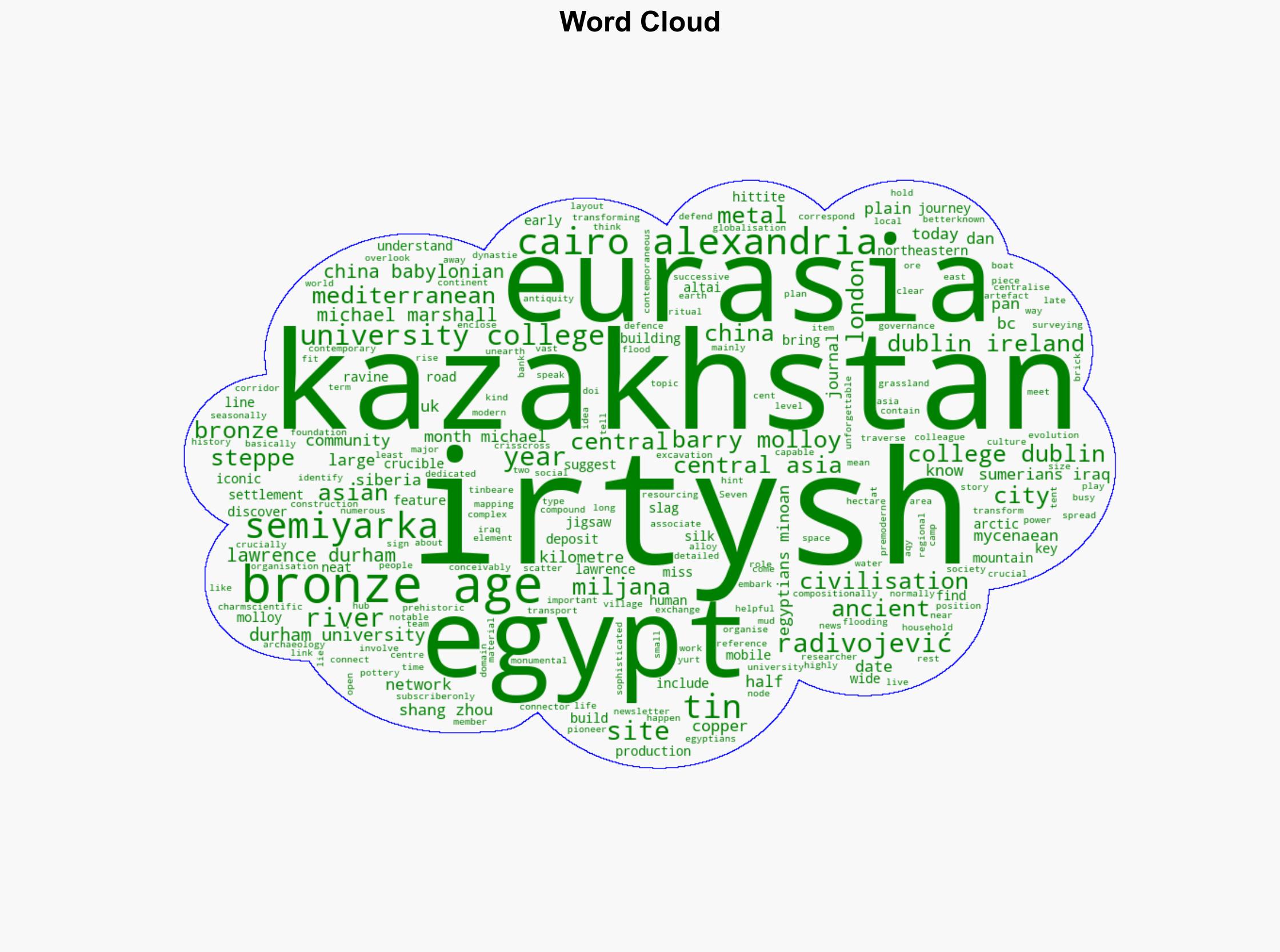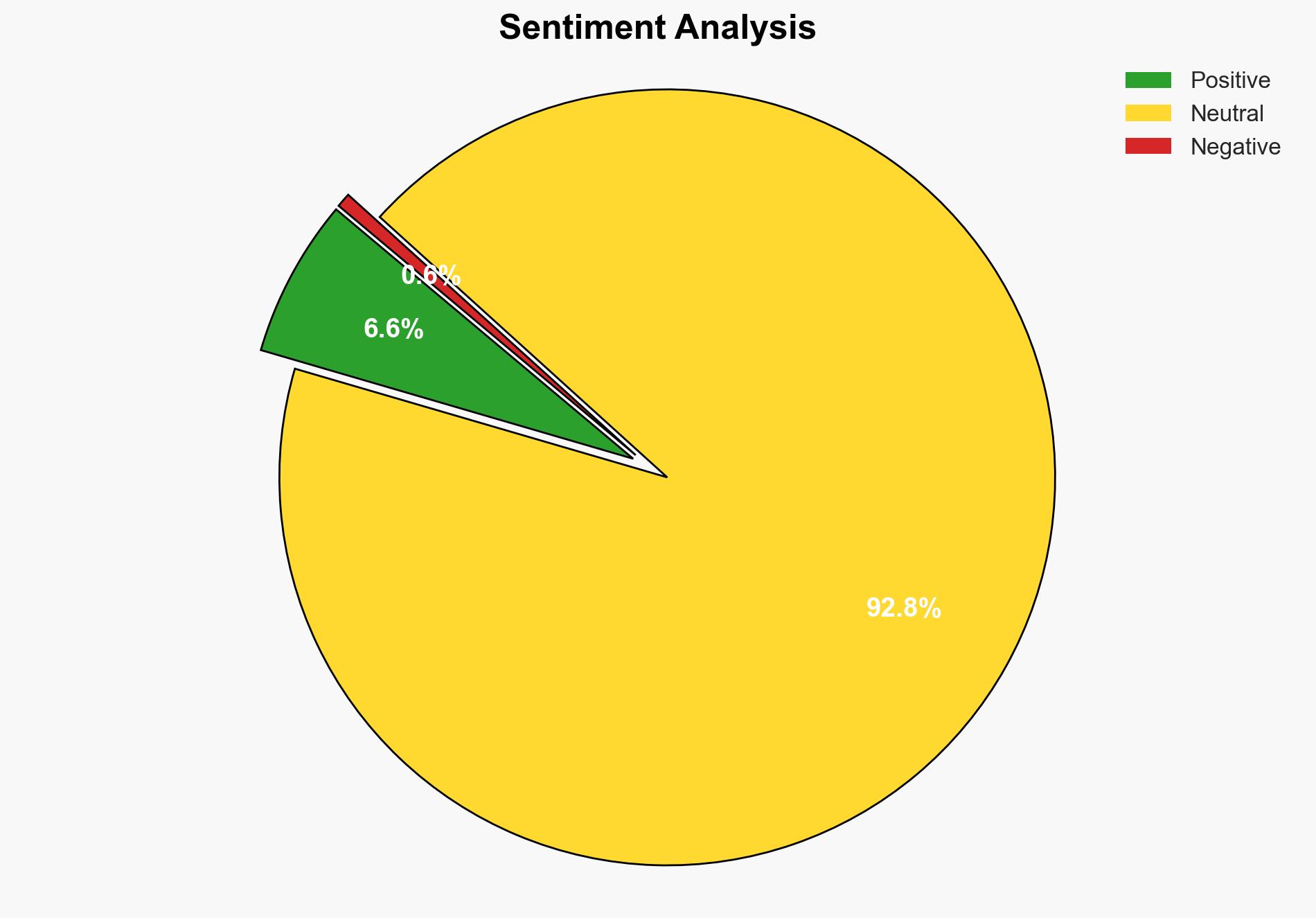Vast Bronze Age city discovered in the plains of Kazakhstan – New Scientist
Published on: 2025-11-18
AI-powered OSINT brief from verified open sources. Automated NLP signal extraction with human verification. See our Methodology and Why WorldWideWatchers.
Intelligence Report: Discovery of a Bronze Age City in Kazakhstan
1. BLUF (Bottom Line Up Front)
The discovery of a large Bronze Age settlement in northeastern Kazakhstan suggests a significant, previously unknown civilization that may have played a crucial role in the regional and possibly intercontinental trade networks of the era. With a moderate confidence level, the most supported hypothesis is that this site was a central hub for bronze production and trade, influencing the socio-economic dynamics of the region. Recommended actions include further archaeological investigation and interdisciplinary studies to fully understand the site’s historical significance and its implications for current regional identity and heritage tourism.
2. Competing Hypotheses
Hypothesis 1: The site was a central hub for bronze production and trade, facilitating the exchange of goods and cultural influences across Eurasia. This hypothesis is supported by the presence of crucibles, slag, and bronze artifacts, as well as the site’s strategic location near major tin and copper deposits.
Hypothesis 2: The settlement was primarily a local administrative and ritual center with limited regional influence. This interpretation is less supported due to the evidence of extensive bronze production and the site’s alignment with known trade routes.
The first hypothesis is more likely due to the archaeological evidence of large-scale metal production and the site’s strategic positioning along the Irtysh River, a known transport corridor.
3. Key Assumptions and Red Flags
Assumptions: The interpretation assumes that the artifacts and site layout accurately reflect the settlement’s historical role and that current archaeological methods can fully capture the site’s complexity.
Red Flags: Potential biases in interpreting the site’s significance based on contemporary geopolitical interests or cultural narratives. The possibility of misdating artifacts due to environmental factors or previous disturbances.
4. Implications and Strategic Risks
The discovery could reshape historical narratives about the Bronze Age in Central Asia, potentially impacting national identity and regional cooperation. There may be economic opportunities through heritage tourism, but also risks of cultural appropriation or exploitation. Politically, the site could become a focal point for regional pride or tension, especially if linked to broader historical claims.
5. Recommendations and Outlook
- Conduct comprehensive archaeological and interdisciplinary studies to validate findings and explore the site’s full historical context.
- Engage with local and international stakeholders to develop sustainable heritage tourism strategies.
- Best-case scenario: The site becomes a catalyst for regional cooperation and economic development through tourism and cultural exchange.
- Worst-case scenario: The site becomes a source of regional tension or is damaged due to inadequate preservation efforts.
- Most-likely scenario: The site enhances understanding of Bronze Age trade networks, contributing to academic and cultural discourse.
6. Key Individuals and Entities
Barry Molloy, University College Dublin, involved in the research; Miljana Radivojević, University College London, contributed to the archaeological analysis.
7. Thematic Tags
Regional Focus, Regional Focus: Central Asia, Archaeology, Bronze Age, Trade Networks, Cultural Heritage
Structured Analytic Techniques Applied
- Causal Layered Analysis (CLA): Analyze events across surface happenings, systems, worldviews, and myths.
- Cross-Impact Simulation: Model ripple effects across neighboring states, conflicts, or economic dependencies.
- Scenario Generation: Explore divergent futures under varying assumptions to identify plausible paths.
- Network Influence Mapping: Map influence relationships to assess actor impact.
Explore more:
Regional Focus Briefs ·
Daily Summary ·
Support us
·





